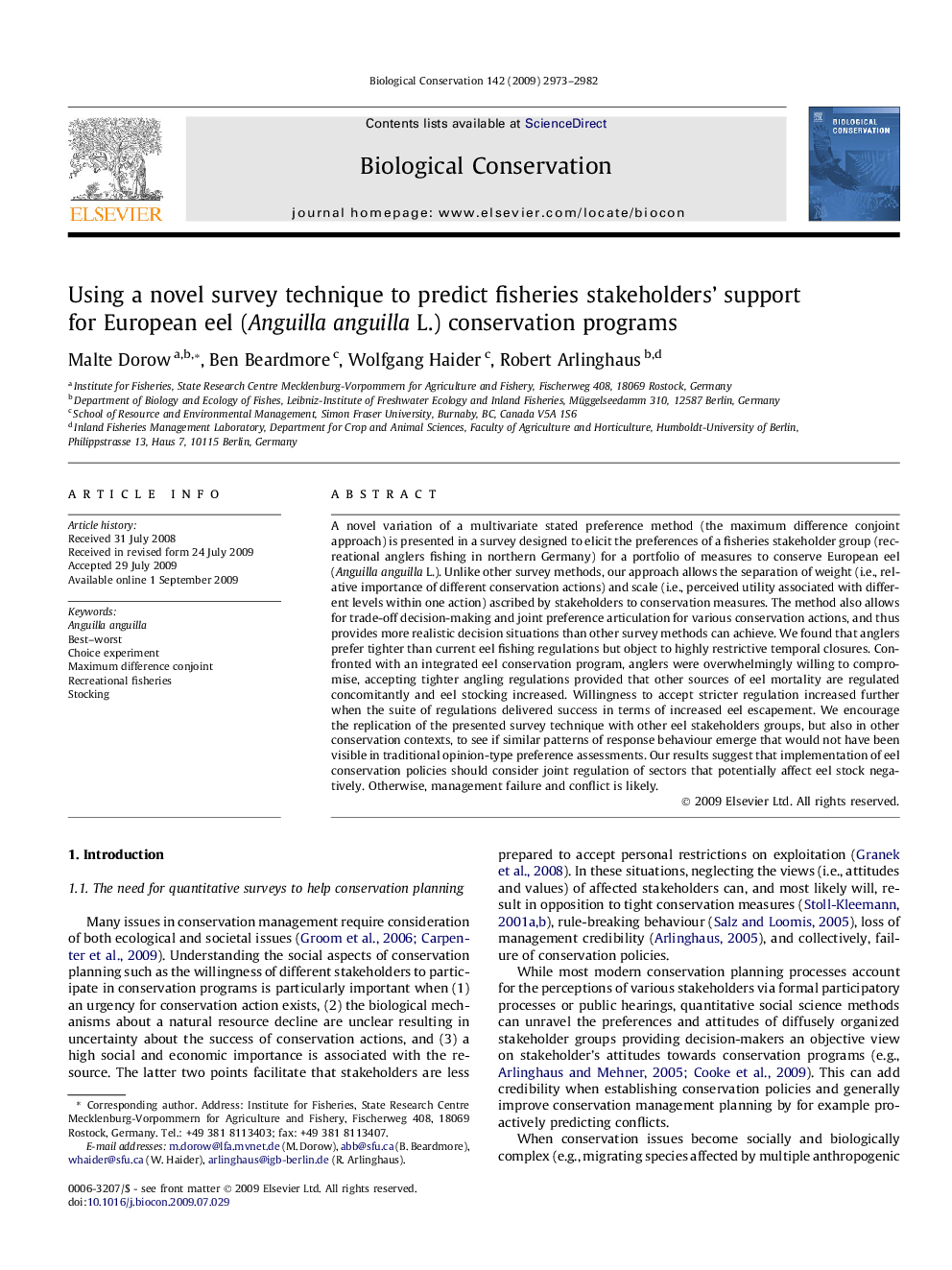| کد مقاله | کد نشریه | سال انتشار | مقاله انگلیسی | نسخه تمام متن |
|---|---|---|---|---|
| 4386394 | 1304565 | 2009 | 10 صفحه PDF | دانلود رایگان |

A novel variation of a multivariate stated preference method (the maximum difference conjoint approach) is presented in a survey designed to elicit the preferences of a fisheries stakeholder group (recreational anglers fishing in northern Germany) for a portfolio of measures to conserve European eel (Anguilla anguilla L.). Unlike other survey methods, our approach allows the separation of weight (i.e., relative importance of different conservation actions) and scale (i.e., perceived utility associated with different levels within one action) ascribed by stakeholders to conservation measures. The method also allows for trade-off decision-making and joint preference articulation for various conservation actions, and thus provides more realistic decision situations than other survey methods can achieve. We found that anglers prefer tighter than current eel fishing regulations but object to highly restrictive temporal closures. Confronted with an integrated eel conservation program, anglers were overwhelmingly willing to compromise, accepting tighter angling regulations provided that other sources of eel mortality are regulated concomitantly and eel stocking increased. Willingness to accept stricter regulation increased further when the suite of regulations delivered success in terms of increased eel escapement. We encourage the replication of the presented survey technique with other eel stakeholders groups, but also in other conservation contexts, to see if similar patterns of response behaviour emerge that would not have been visible in traditional opinion-type preference assessments. Our results suggest that implementation of eel conservation policies should consider joint regulation of sectors that potentially affect eel stock negatively. Otherwise, management failure and conflict is likely.
Journal: Biological Conservation - Volume 142, Issue 12, December 2009, Pages 2973–2982